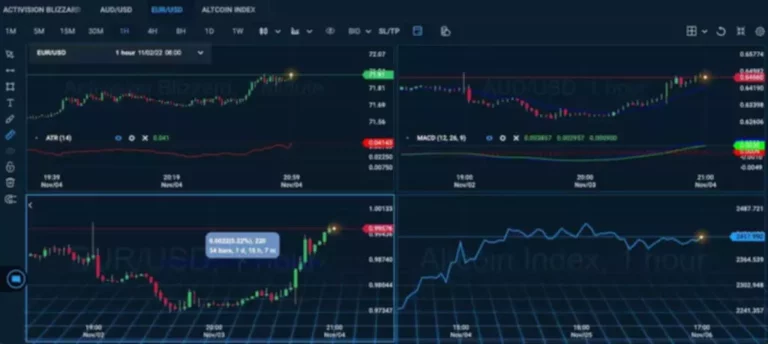These ETDs are linked to totally different currencies and supply a extra regulated means of buying and selling in comparison with the extra versatile OTC (Over-the-counter) markets. Some commonly traded index derivatives include well-known ones like Nifty 50, Sensex, Nikkei, Nasdaq, S&P 500, and more. The key difference between inventory and index ETDs is that you could physically obtain the inventory derivatives, meaning you will get them in money. For example, in case you have a TCS stock spinoff, you could receives a commission with TCS shares. However, with index derivatives, like the BSE index, there isn’t any bodily supply concerned. Derivatives are efficient instruments for safeguarding in opposition to fluctuations in change charges, rates of interest, or commodity prices.
- B. An OTC market, for the rationale that contract may be personalized to match ABC’s desired danger profile.
- This high degree of liquidity ensures that buyers should buy or promote contracts anytime, permitting for quick execution of trades and minimising worth impact.
- Exchange-Traded Derivatives (ETDs) are financial contracts whose value is based on the price or worth of an underlying asset.
This liquidity permits investors to rapidly execute trades at aggressive costs with out vital value impression, thus reducing transaction costs and enhancing market efficiency. These contracts enable buyers to invest on the underlying asset’s worth movement and can be utilized for hedging purposes as properly. For example, an investor who expects the worth of a sure inventory to extend sooner or later can buy futures contracts to revenue from the value appreciation.
This transparency enhances market integrity and helps buyers assess market conditions, identify alternatives, and handle dangers successfully. Call choices give the client the right to buy the underlying asset, while put choices give the customer the proper to sell it. Traders can use choices for hedging towards potential losses or for speculative functions.
Since an ETF trades on an trade, the method that makes ETFs open-ended differs from that of mutual funds. ETFs depend on a novel creation/redemption process to control the provision of items in circulation. ETD derivatives offer excessive liquidity, decreased dangers, transparency, and standardized contract terms. Derivatives are monetary agreements that acquire or lose their worth based mostly on adjustments within the prices of their base property (currency, stocks, bonds, and so forth.). Some traders favor to commerce a complete group of shares that make up an exchange, somewhat than dealing with particular person stock futures.
Uniswap Price Bounces As Whales Accumulate

Think About a fictional trade referred to as “WeatherComex” that offers Rainfall Futures contracts. These contracts permit agricultural companies to hedge towards the chance of inadequate rainfall affecting their crop yields. A firm rising wheat in a drought-prone area could buy Rainfall Futures that pay out if the rainfall of their space falls beneath a sure threshold in the course of the rising season.
Inventory Etds
The exchange members encompass sellers (market markers) who’re ready to purchase at one value and sell at the next price. If they can not find counterparties to commerce, danger takers corresponding to speculators may be willing to imagine an exposure in the underlying. Whether Or Not you’re a professional dealer or a curious investor, understanding how exchange-traded derivatives work can provide you a significant edge in today’s dynamic monetary surroundings. Some indices on which traders usually choose to buy derivatives contracts are – S&P 500, Nifty 50, Sensex, Nasdaq and Nikkei. These funding https://www.xcritical.in/ autos are regulated by the Securities and Trade Board of India (SEBI) and you ought to buy them on the exchanges. Retail traders might take a place in inventory choices to hedge the worth of their stock portfolios.
The capacity to buy and redeem creation models offers ETFs an arbitrage mechanism meant to attenuate the potential deviation between the market price and the web asset value of ETF shares. A derivative exchange traded derivatives examples is a financial contract whose worth relies on, or derived from, a standard safety. ETFs usually are not derivatives as a end result of, like most mutual funds, they typically invest directly within the physical securities of their target benchmarks.

While trading ETDs, traders also get the good factor about easily offsetting their previous agreements. This is because they can simply dump their current place to a keen party out there and purchase an offset place, that too at a revised value. In fact, institutional buyers may decide to work instantly with issuers and funding banks to create tailored investments that give them the exact risk and reward profile they seek. Whereas offering advantages, ETD also comes with limitations and risks that buyers ought to know. Nonetheless, the marketplace for OTC derivatives is decentralised and fewer clear than the ETDs’. This makes it hard to get complete worth information and would possibly result in lower liquidity.
It enhances market liquidity by providing standardized contracts with simply tradable features. This liquidity attracts a wide range of individuals, from retail traders to institutional traders, thereby rising market efficiency. Exchange traded derivatives (ETDs) are monetary contracts that are tradable on the inventory exchanges. They have an underlying asset which may range from stocks, bonds, commodities, currencies, etc., and the settlement derives its value from the price fluctuation of those securities. Many ETFs present some stage of diversification compared to Cryptocurrency wallet proudly owning an individual inventory. Due to their presence on a trading change, ETDs differ from over-the-counter derivatives in relation to their standardized nature, bigger liquidity, and ability to be traded on the secondary market.